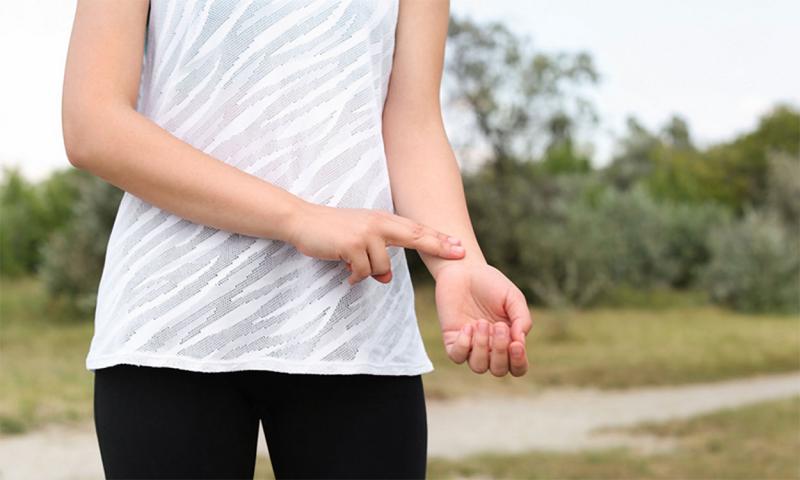Originally written by Nikki Prosch, former SDSU Extension Health & Physical Activity Field Specialist. Updated by Emily Kranz, former SDSU Extension Health & Physical Activity Field Specialist.
Physical activity of all kinds can be performed in a variety of intensities, ranging between light, moderate, and vigorous (or high) intensity activity. All types of physical activity are beneficial and count towards meeting your health and fitness goals. Understanding the difference between intensity levels is important to understanding the current Physical Activity Guidelines for Americans. The general guideline for obtaining health benefits is to aim for 150 minutes of moderate-intensity activity or 75 minutes of vigorous-intensity activity each week.
Definitions of Activity Intensity
Light
Light-intensity activities require the least amount of effort compared to moderate and vigorous activities. The definition for light intensityactivity is an activity that is classified as less than 3 METS. One MET, or metabolic equivalent, is the amount of oxygen consumed while sitting at rest. Thus, an activity classified as 2 METS would be equal to 2 times the amount of oxygen consumed while at rest, which is 1 MET. METS are a convenient and standard method for describing absolute intensity of physical activities. Some examples of light physical activities include walking slowly (for example, shopping or walking around the office), sitting at your computer, making the bed, eating, preparing food, and washing dishes.

Moderate
Moderate-intensity activities are defined as activities ranging between 3 and less than 6 METS. These activities require more oxygen consumption than light activities. Some examples of moderate physical activities include sweeping the floor, walking briskly, slow dancing, vacuuming, washing windows, shooting a basketball.
Vigorous
Vigorous-intensity activities are defined as activities requiring 6 or more METS. Vigorous activities require the highest amount of oxygen consumption to complete the activity. Examples of vigorous physical activities include running (faster than 5 miles per hour), swimming, shoveling, soccer, jumping rope, and carrying heavy loads (for example, bricks).
Methods to Measure Exercise Intensity
Talk Test
An easy way to estimate intensity of activities is through a method called the “talk test.” This method is a simple, practical way for individuals to measure their activity intensity. If you are doing a moderate intensity activity, you can talk, but not sing during the activity. If you are doing a vigorous-intensity activity, you will not be able to say more than a few words without taking a breath.
Heart Rate
Heart rate is an objective measure of intensity and can be assessed using your radial pulse by gently pressing your pointer and middle finger on the thumb side of your wrist and count the beats per minute. You can take a shortcut and count the beats for 10 seconds and multiply your result by 6. Be careful not to use your thumb, as your thumb carries its own pulse.

There are also heart rate monitors that can be worn, and it is a built-in feature within many smart watches and other wearable devices. Target heart rate ranges are dependent upon your age; the younger you are, the higher your maximum heart rate. A general rule is to subtract your age from 220 to obtain your maximum heart rate. Target heart rate ranges are presented in a percentage of your maximum heart rate, for example: 50 to 70% of maximum heart rate for moderate-intensity exercise, and 70 to 85% of maximum heart rate for vigorous-intensity exercise. Review the sample scenario and calculation below.
A 50-year-old man who is aiming for moderate-intensity exercise should aim to keep his heart rate between 85 and 119 beats per minute while exercising.
- Maximum Heart Rate: 220 - 50 (age) = 170 beats per minute
- 50% Maximum Heart Rate = 170 × .50 = 85 beats per minute
- 70% Maximum Heart Rate = 170 × .70 = 119 beats per minute
- Moderate-Intensity Heart Rate Range = 85 (50%) to 119 (70%) beats per minute
The American Cancer Society also offers a free online target heart rate calculator to help you find your ideal rate.
Rate of Perceived Exertion
Rate of Perceived Exertion (abbreviated as RPE) is a subjective way to self-assess and estimate exercise intensity. There are 2 commonly used scales to assess RPE, including the Standard Borg RPE Scale, which ranges from 6 to 20, and the Modified Borg Scale, which ranges from 0 to 10. Utilize the terms provided in the scales below to assess your individual level of perceived effort while exercising. The range of 12 to 14 is typically considered moderate-intensity and 15+ is considered vigorous-intensity using the 6 to 20 scale. There is a strong correlation between the Borg RPE 6 to 20 scale and heart rate; for example, an individual who perceives their exertion to be a level 13 would typically have a heart rate around 130 beats per minute (13 × 10 beats per minute = 130 beats per minute).
Borg RPE Scale (6 to 20)
6 - No exertion
7 - Extremely Light
8 -
9 - Very Light
10 -
11 – Light
12 -
13 - Somewhat Hard
14 -
15 – Hard
16 -
17 - Very Hard
18 -
19 - Extremely Hard
20 - Maximum Exertion
Modified Borg RPE Scale (0 to 10)
0 - No exertion
1 - Very light
2 - Light
3 - Moderate
4 - Somewhat Hard
5 - Hard
6 -
7 - Very Hard
8 -
9 – Very, Very Hard
10 - Maximum Exertion
There are other methods of measuring intensity that are typically reserved for a clinical or laboratory setting including measuring oxygen consumption or blood lactate levels. Stick to the three methods described above for everyday use of measuring exercise intensity. No matter which method you utilize to measure exercise intensity, the most-important thing is to make sure to move your body every day.
Additional Resources
- For intensity levels of common daily activities, view the Compendium of Physical Activities.
- Additional information about how much physical activity you need can be found in our article about the Move Your Way® Campaign.


